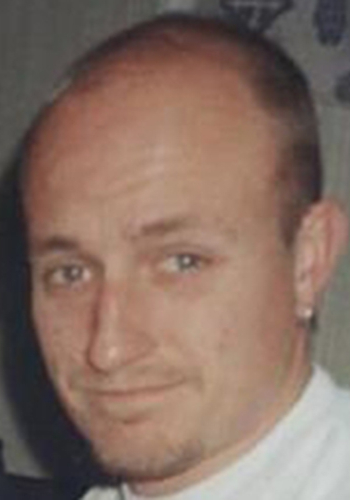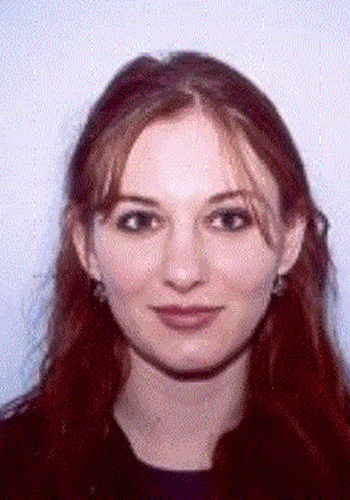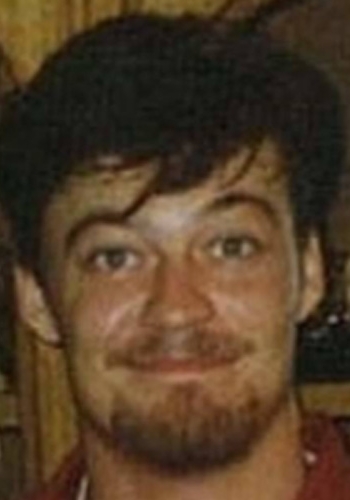Helping with the search
Have you thought about proactive steps that may help with the search?
It’s important for families and friends of a missing person to feel, and be, involved in the investigation. In consultation with your case officer (local police), you may consider helping with the search by:
- Searching places the missing person liked to visit or where they may have gone, such as: shopping centres, hotels, parks, railway or bus stations, food outlets, or amusement arcades.
- Contacting the missing person’s former and current friends, colleagues, employers, and all known relatives. Check when they last had contact with the person or if they have any information that could be of assistance. Maintain regular contact with these people. They may come across information that could help locate the missing person.
- Checking with local transport services. If the missing person suffers a mental illness they may have wandered from home and travelled on public transport.
- Checking with hospitals in the area. If the missing person was in an accident, they may be in a local hospital and unable to make contact. Ask for the missing person by name. If no-one by that name is on record, ask if they have any ‘unknown’ people in their care who resemble the missing person.
Police will be managing the overall search strategy for the missing person and it is important you coordinate your efforts with police and take their advice when conducting your own search efforts.
Using the Media
The media can be a powerful tool for raising awareness about a person’s disappearance. It can be used both immediately and long-term to encourage anyone who may have information about the whereabouts of a missing person to come forward to police.
When using the media, it’s important you speak with your case officer or the Missing Persons Unit before you go ahead.
In the rare situation police advise against publicity, they will explain the reasons why. Likewise, police will speak with you prior to involving media as they will need to seek your consent. Police will consider risk factors such as a missing person’s medical needs, grave concerns for their safety or welfare, age, or other vulnerabilities when determining whether the use of media is appropriate and may prove useful.
Developing a plan and deciding early what you are comfortable sharing may help to avoid unwanted media requests and intrusions. Before approaching media yourself, and after speaking with your case officer, consider:
- Who should talk to the media? A relative, friend, or family member; the case officer or police representative; and/or both.
- What type of information are you able to provide in order to avoid inadvertently hindering the investigation; be aware of the missing person’s privacy if they were to return; and think about personal details you may be asked and how to best approach them.
- Will you, or the media spokesperson, participate in an interview, or prepare a statement? Seek the advice of the Police Media Unit, who will be able to best direct you.
What will the media ask?
When media approach family members, or close friends of a missing person, they do so in an attempt to add a ‘human’ element to the story. The more information you can provide them, the more likely they will get the story right.
The media will require basic information about the missing person including their name, age, a physical description, and their last known whereabouts. They’ll also need recent photographs (several) and any other imagery that will add to the story, particularly for print and television media.
In-depth media interviews—television features, magazines, print articles—will more than likely ask personal questions, such as:
- When did your loved one go missing?
- What were the circumstances?
- Can you tell us a bit more about him/her and what happened that day?
- What do you believe has happened to your loved one?
- How has this experience affected your family?
- How have you and other loved ones coped with the loss?
- What steps have the police taken in finding your loved one?
- What advice would you give to other people going through the same experience?
- What can the public do that might help you and your loved one?
- What would you say to your loved one if they were watching/listening?
Keep in mind there is no guarantee the media will run your story, as it may compete with other news items on the day. Also consider seeking proactive media around anniversaries, birthdays, and special occasions such as Christmas. This will spark new interest in the case by both the media and the public, which can help in finding some answers.
We have produced a factsheet that may assit families in considering using media to assist in the location of their loved one.
Social media and missing persons
Social media can be a powerful tool to raise awareness of missing person’s cases. The National Missing Persons Coordination Centre Facebook Page is a national page dedicated raising awareness of long-term missing persons in Australia, as well as educating the community on missing persons issues. To get a case profiled on the page, speak with you case officer or email the NMPCC team.
If you’re thinking of starting your own social media campaign, speak with your case officer and think about the long-term implications it may have for you and your family. Things to consider include:
- Information shared in the public domain is hard to control. Once information is on the internet it can be freely shared and used by others.
- If and when your loved one returns, it can also be difficult to remove information from the public domain. Sharing identifying details and updates about the case may also jeopardise the investigation or alert perpetrators to potential police activity or enquiries.
- Long-term commitment: Starting a social media account or campaign is a long-term commitment. While it’s great to have community support and many people helping you search for your loved one, be aware that people who join your campaign will be eager for news. You may get regular emails or messages from people requesting updates and new information which can be distressing if there is no new information for periods of time.
- You may also experience ‘trolls’, and others who post negative comments about the missing person. While you can eventually block and report these people, the experience can be distressing.
- Consider sharing the responsibility for monitoring social media sites with friends or relatives to help ease the burden.
All calls for information should be directed to Crime Stoppers (1800 333 000). They will provide the information to police. Providing the public with your private details, or overly engaging within message platforms, is not advised.
The Electoral Roll
If you are searching for a missing loved one, who you have lost contact with over a period of time, be that a couple of months or a number of years, and there are no concerns for the persons welfare, Australian Police may be unable to assist. These instances are more appropriately classified as a 'Family Tracing Matter' rather than a missing persons. In these instances, you are able to attend your local Australian Electoral Commission (AEC) office to view the latest electoral roll.
Australian citizen aged 18 and over are required by law to keep their details on the electoral roll correct and up-to-date, making the electoral roll a valuable tool in finding the address of family members, who have been out of touch for a number of years.
The AEC website contains further information on the electoral roll, including who can access the role and where it can be accessed from.
Other Options
There may be other options for you, or your case officer, to consider as part of the missing person’s investigation.
Posters
- Create a missing person poster, featuring the person’s details (name, age, physical description), last known whereabouts, and a clear, recent photo. A clear heading ‘MISSING PERSON’ or ‘HAVE YOU SEEN ME?’ will help. If the missing person is already profiled on the national register, you can download a poster with their relevant information from their profile page.
- Posters should also have clear contact details for people to provide any information they may have. Across Australia, Crime Stoppers (1800 333 000) is used for this purpose. Do not use your own private or mobile phone numbers.
- If you need assistance with printing, Officeworks has a monthly community service budget. Members of Parliament also work to support the local community and their local office may be able to assist you with printing your posters.
- Contact local community groups to help distribute the poster, and keep a list of where posters are distributed and displayed to avoid duplication.
- Consider displaying posters in places the missing person is known to visit and also areas such as: shopping centres, bus stops, and railway stations; at local sporting and entertainment venues; libraries; local councils; gyms; clubs and community centres.
Rewards
In some missing person’s cases a reward is offered to encourage people to come forward with information regarding the missing person’s disappearance.
Rewards for information are generally awarded for information that leads to a conviction or arrest relating to missing person’s cases where there is a suspicion of foul play. The ability to offer a reward, and the process to do so, varies in each State and Territory, and is dependent on the circumstances of the missing person’s case. Your case officer will be best placed to determine whether your case would benefit from a ‘reward offer’, and subsequently, how to go about it.
Private rewards may also be offered but it is recommended this is done in conjunction with the investigation, and with the support of the official channels for providing information about the missing person. You may wish to seek legal advice prior to offering a private reward, and again, discuss this option with your case officer.
Community awareness and events
Keep the community’s awareness of the missing person high by keeping the media interested and involved. Consider highlighting the case on the anniversary of their disappearance and/or their birthday. You may wish to seek out assistance from political figures, influential members of the community, or other high profile people who can help maintain interest in your case.
Events can also encourage community and public support for your missing persons’ case, and may also include a fundraising element. Funds raised can be used to support your search efforts, help with the missing person’s financial obligations (rent, bills etc.), or donated to a charity of choice. ‘Go Fund Me’ pages can also be used for this purpose.
If you don’t wish to organise your own event, consider getting involved in existing events that raise awareness of missing persons such as International Missing Children’s Day or National Missing Persons Week (led by the NMPCC) or family-driven events such as Picnic for Missing, which takes place during National Missing Persons week, or Day for Daniel (Morcombe).
Age Progression
Images of long-term missing persons are sometimes age progressed to illustrate ‘what the person would look like today’. This is particularly helpful for cases involving children and young adults, but is just as effective for adults who have been missing for a significant period of time.
Age progressed images of a missing person are used by police as an avenue of enquiry, and in the hope the missing person is recognised by a member of the public years after they disappeared. Age progression of images are undertaken by trained specialists (usually forensic artists).
The NMPCC has the capability to do this on behalf of State and Territory police, in consultation with your case officer or Missing Persons Unit.
It is important to keep in mind that an age progression is an artist impression of what a person might look like and may not look identical to the person in all regards. Police artists cannot easily predict changeable aspects of a person’s appearance such as hair style, hair colour, makeup, facial hair, weight gain and weight loss.





